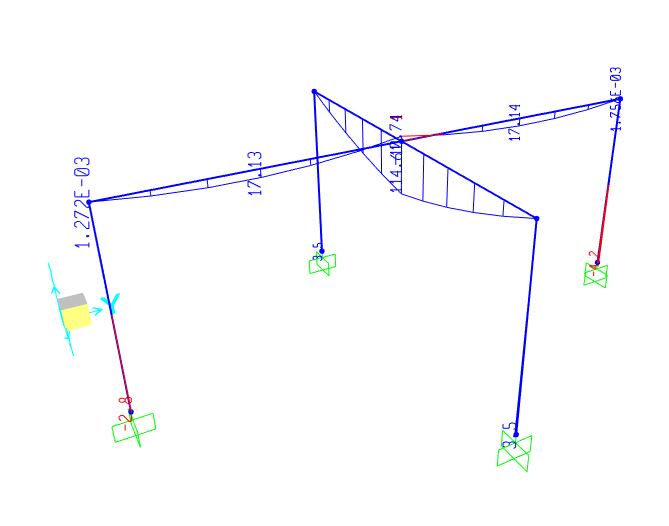4 beams are supported by the column at one side, another side is jointed together at the intersection. I have assigned UDL of 20 kN/m on all the beams. 2 beams are longer (3m), 2 beams are shorter (2m) . Surprisingly, the BMD of the longer beams is hogging at the middle part , while the BMD of the shorter beams is sagging at th middle. Does it make sense.
Can someone explain this situation ? Why the BMD of the longer beam is hogging at the middle ? There's no column at the middle , how can there's hogging moment at the middle for the longer beam ?
I think the BMD of the shorter beam make sense and the BMD of the longer beam shall be teh same also (pure sagging in the middle and no sagging at all. ) Correct me if I am wrong ..

Can someone explain this situation ? Why the BMD of the longer beam is hogging at the middle ? There's no column at the middle , how can there's hogging moment at the middle for the longer beam ?
I think the BMD of the shorter beam make sense and the BMD of the longer beam shall be teh same also (pure sagging in the middle and no sagging at all. ) Correct me if I am wrong ..

